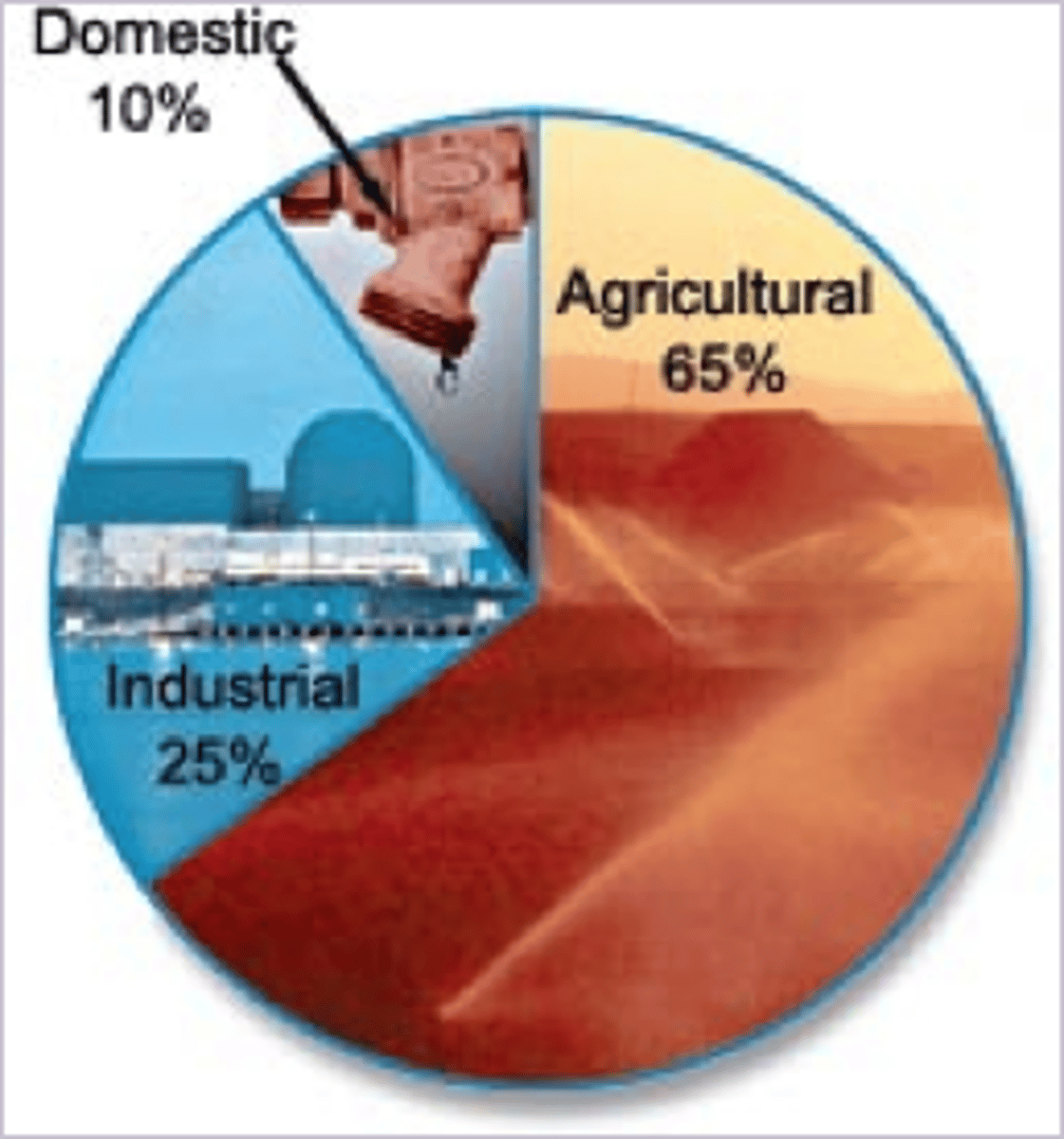(5) Changes to the Water Cycle Over Time
1/19
There's no tags or description
Looks like no tags are added yet.
Name | Mastery | Learn | Test | Matching | Spaced |
|---|
No study sessions yet.
20 Terms
Changes
storm events
seasonal changes
human impacts
storm events (NOA)
"... coastal residents understand the dangers associated with hurricanes (heavy rainfall, high wind, storm surges). But did you know that approximately 25% of tropical cyclone-related deaths in the US do not occur along the coast?"

Storm events
- Powerful storms lose wind strength when they move over land but continue to dump massive amounts of rain into streams/rivers/lakes, posing a serious threat of inland flooding
- Tropical storms can cause rivers to flood as they rise due to intense heavy rainfall
e.g., Hurricane Irene 2011, broke more than 26 river flooding records in New York, New Jersey, and Vermont alone
- Inland flooding is a danger that can occur far from where the eye of the hurricane and heavy winds make landfall.
e.g., Hurricane Dennis 2005
... storm track was from far northwest Florida to northern Mississippi, but heaviest rainfall and major flooding occurred north and east in western Georgia and urban areas of Atlanta
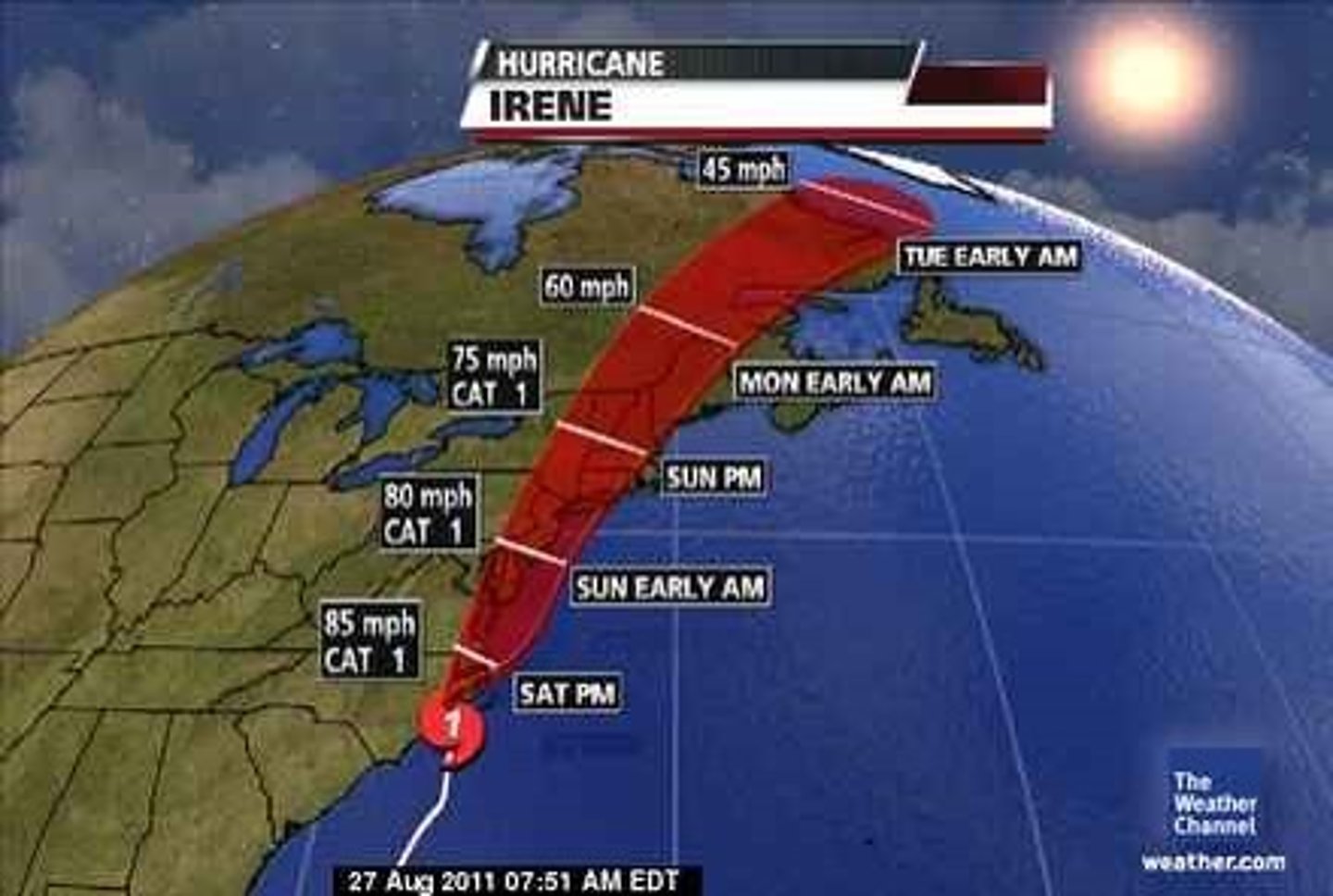
Seasonal change
... a river regime is the variability of a rivers discharge throughout the course of a year in response to precipitation, the temperature, evapotranspiration, and drainage basin characteristics
Seasonal Change - Mohawk River NY
e.g., The Mohawk River flows out of mountains in New York State
... the snowy, cold winters and dry hot summers create a different distinct regime
- Spring maximum discharge caused by snow melting in the mountains
- Very low temperatures and long winters lead to moderately low discharge because much of the precipitation remains as snow + river freezes
- Summer temperatures average at 26.5oc lead to high evapotranspiration rates
- Increasing rainfall from extra tropical cyclones moving up from the Gulf of Mexico increase discharge

Seasonal Change - River Avon UK
UK rainfall is fairly evenly distributed throughout the year with a slight increase in autumn/winter
... seasonal variations in temperature means ET losses are concentrated in the summer
... this gives the 1500 rivers in the UK a marked seasonality
- Higher discharge in winter, slightly higher rainfall and much less evapotranspiration
- Discharge falls through the spring and early summer as plants take up more water and leaves grow, so evapotranspiration increases
- Late summer minimum, higher temps, and plants in full leaf increase evapotranspiration
... geological characteristics of catchments also influence regime: Comparing two tributaries of the river Thames (River Ock and River Lambourne) where they have identical climates but different rock types
- River Ock = impermeable clay
- River Lambourn = permeable chalk
... River Ock has more flashy response to same rainfall events in comparison to the aquifer fed Lambourn

Seasonal Change summer vs winter
total precipitation in winter may be greater but storms may be more frequent in summer
vegetation grows rapidly in summer, increasing interception and transpiration, whereas vegetation dies back in winter
evaporation is faster in summer due to higher temperatures, whereas lower temperatures in winter reduce rate of evaporation
dry soils encourage infiltration and are more common in summer. soils may become saturated more easily in winter, leading to overland flow. hard, baked soils in summer encourage overland flow (i.e., heatwaves)
river channel flow: low flow conditions are more likely in summer, than the high flow conditions expected in winter
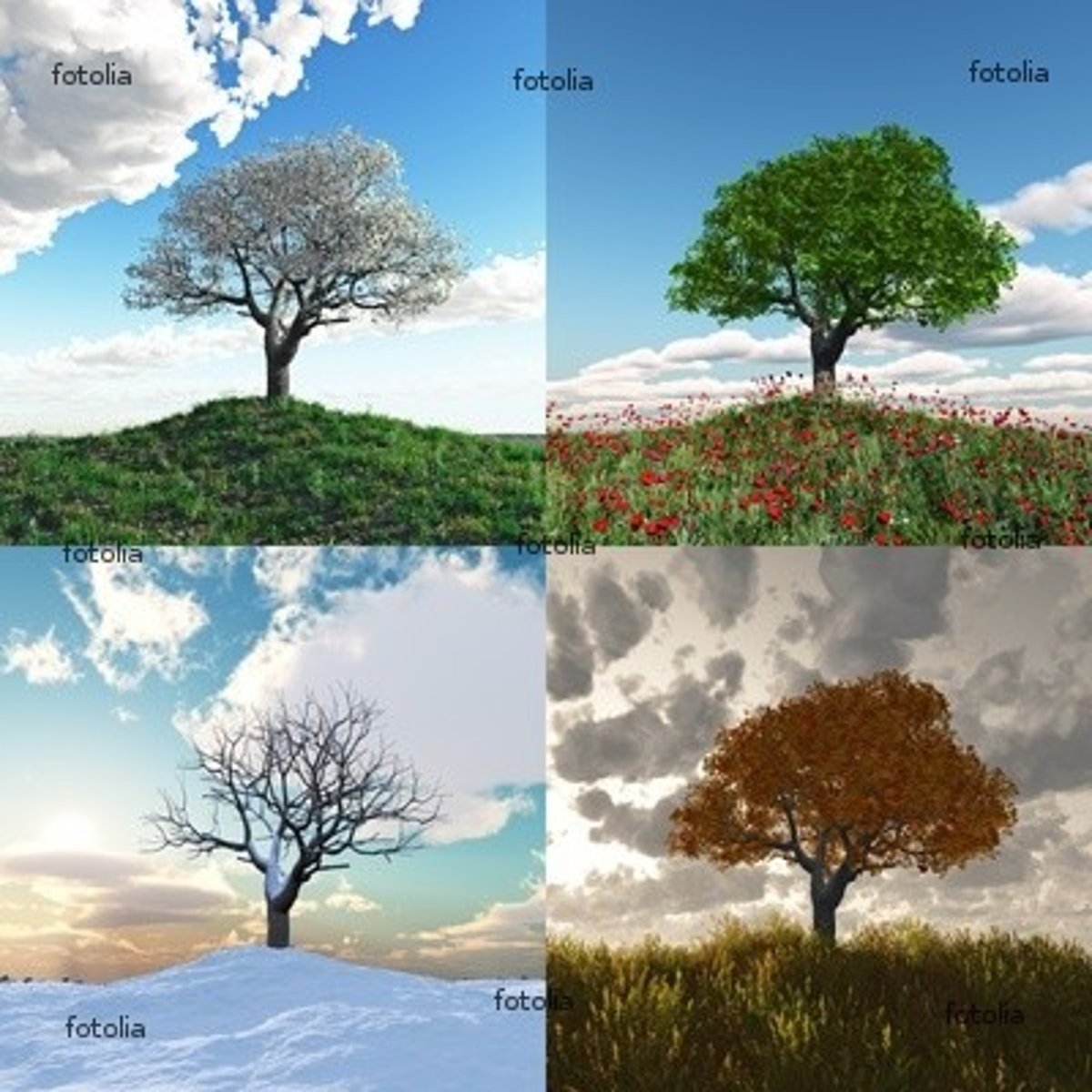
Human impacts
1. Farming Practices - deforestation
2. Farming Practices - desertification
3. Farming Practices - subsurface drainage
4. Land Use Change -urbanisation
5. Land Use Change - use of SuDs
6. Water Abstraction
7. Ground water recharge
Human Impacts (1.) Farming Practices - deforestation
e.g., deforestation in the Amazon
...deforestation up to 20% has little effect on water cycle, but if >50% than large changes occur
forest clearing = less vegetation, less evapotranspiration/interception so more surface runoff + throughflow

Human Impacts (2.) Farming Practices - desertification
... the process of land turning into desert as the quality of the soil declines over time (semi-arid environments)
- Population growth in dryland regions and climate change are key factors and overgrazing by livestock is a key agricultural factor
- As the vegetation is removed on of the key dryland water stores is lost, the soil degrades due to reduced humus input, and no root structure to bind it together
- The soil is then susceptible to wind erosion and water erosion in the form of torrential downpours, also reducing soil moisture store

Human Impacts (3.) Farming Practices - subsurface drainage
... where excess water is removed from the soil profile through a network of perforated tubes within the soil surface
- Farmers with poorly drained soils use these measure because for every £1 spent you get £2 back in improved crop yields
Soil + Field Drainage
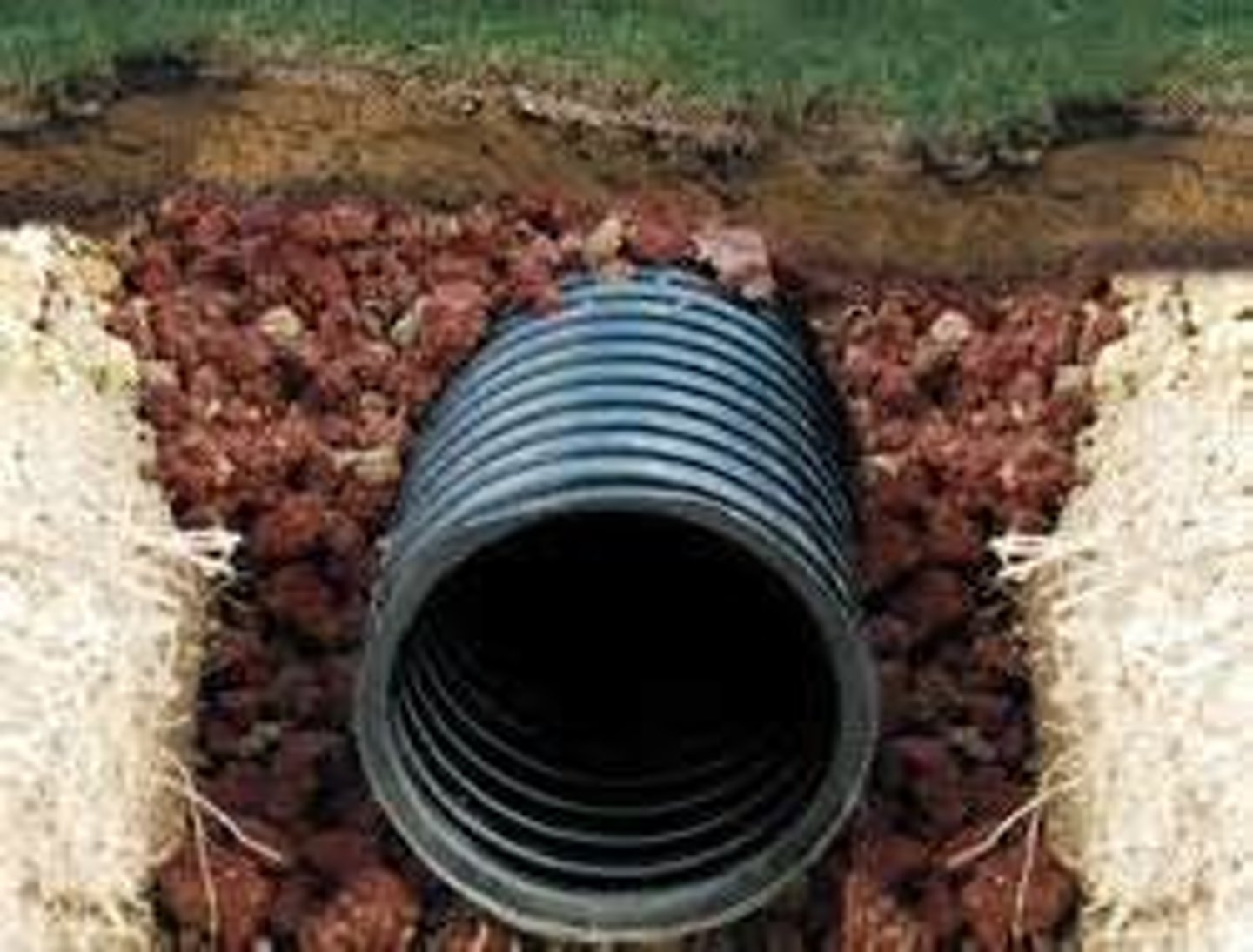
Soil + Field Drainage
... changes in the amount of water reaching river courses, and the speed at which it gets there
= lowers the water table in the soil
Negatives:
- Discharge of rivers becomes more flashy, peak discharge increases and flooding is more likely
- Topsoil can dry out in periods of low rainfall, nitrates from fertilisers are easily carried in sub-surface drains, and the contaminate water sources and can cause eutrophication
- Increased cost of flooding and damage
- Loss of oxygen in ponds and deaths of pond organisms
Positives:
- Water is removed from the soil quickly so that soil is not waterlogged
- Air is able to get into the soil and soil changes from anaerobic to aerobic conditions with air spaces that allow plants to access oxygen
- Free-draining water in soil brings in nutrients previously vulnerable
- Makes previous wet land available for agriculture
- Crops yields can increase, and animals have more areas to graze

Human Impacts (4.) Land Use Change - urbanisation
... changes to the natural environment by using human building materials, clearing natural stores, and the use of impermeable surfaces e.g., tarmac
- Recurrence interval has been documented to be much higher in an urbanised environment than in a natural environment
- Surface runoff increases from 10% in natural environments to 30% in urban environments
- often involves clearing vegetation, leading to more surface runoff from lack of interception/evapotranspiration
... roots of trees also help create network of tubes for water to infiltrate ground

recurrence interval
the average length of time between floods of a given size along a particular stream

Human Impacts (5.) Land Use Change - use of SuDs
... Sustainable Urban Development System: set of guidelines planning permissions must meet that aim to mimic natural sources and manage fluvial sources
soakaways used
- The sustainable urban water cycle = stormwater reused to reduce runoff, wastewater reused to reduce wastewater discharge, increased use of nature bases to increase evapotranspiration and infiltration
Human Impacts (6.) Water Abstraction
... this where groundwater is extracted via boreholes in aquifers for human use
- Over abstraction is usually caused by excessive demand from irrigation and leads to loss of surface rivers and their habitats as well as saltwater incursion in coastal areas
- Saltwater incursion = process where sea water is moved into aquifers
... over abstraction in Texas - water table has dropped by 50m in just 50 years
... over abstraction in the Gaza Strip - 90% of abstracted water is unfit for drinking and kidney failure and gum diseases are common
... 1.4 million people depend on this water, and 70% of the population face serious water shortages (2008)

Human Impacts - 7. Ground water recharge
... aquifers are replenished with water from the surface
- Water from rainfall percolates into underlying aquifers
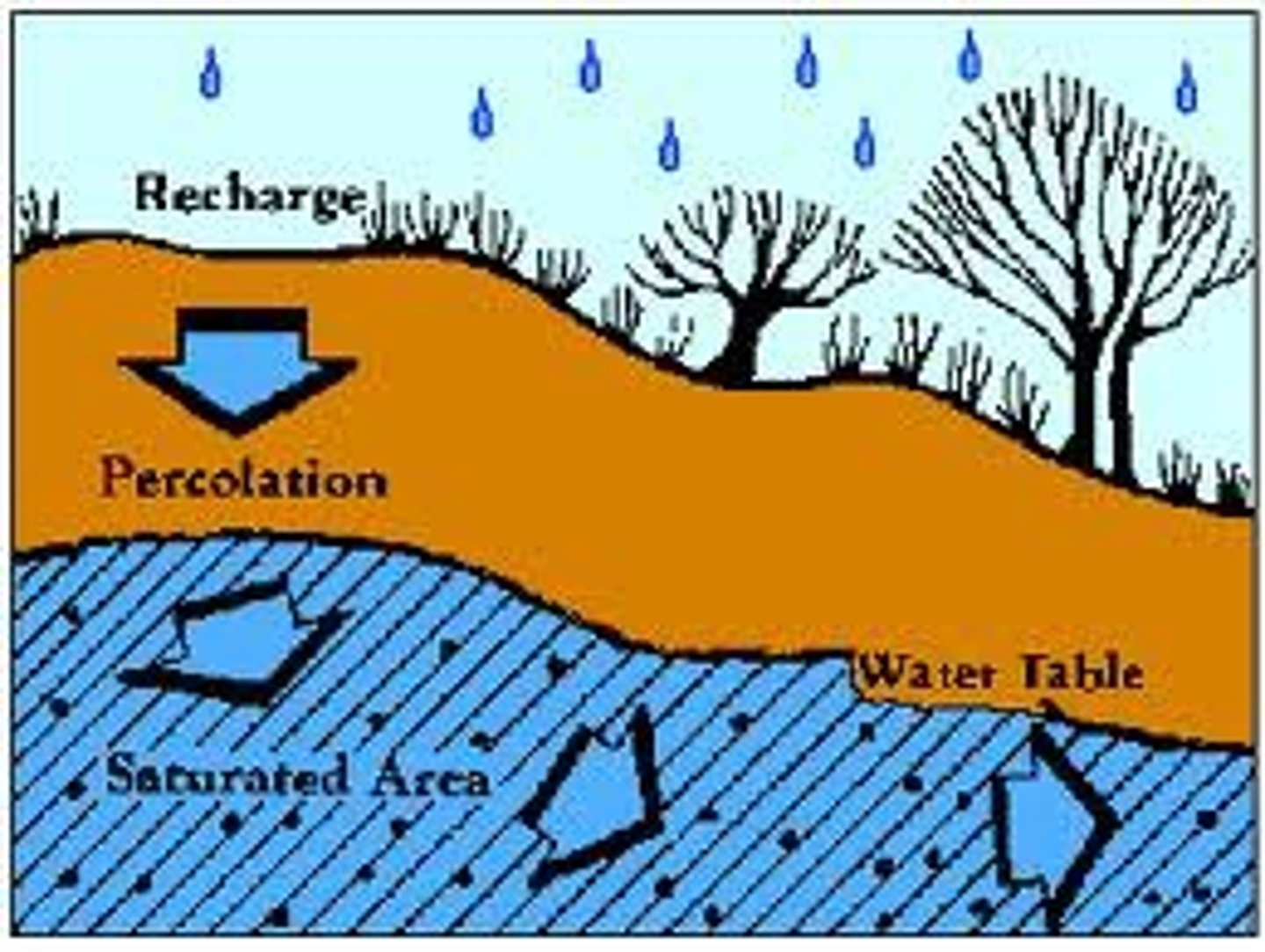
Global water use (Human Activity)
Globally - we withdraw 8% of annual freshwater runoff for our own use. The other 92% makes it back to the oceans
how much of 8% is returned to water cycle through evaporation?
70% is returned to water cycle through evaporation
remaining 30% is returned to rivers as partially degraded water
breakdown of usage for global 8% of water withdraw for human activity
7% is used for irrgation
0.8% is used for industry
0.2% is used for domestic use
